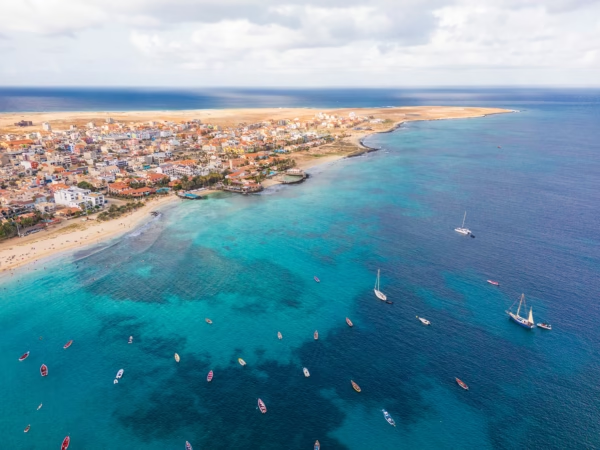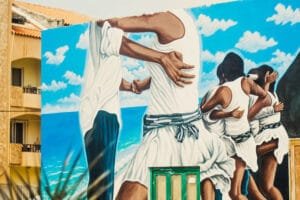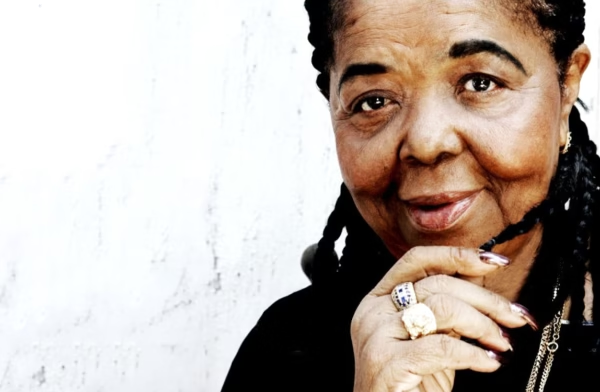Cesária Évora: The Great Voice of Cape Verde in the World
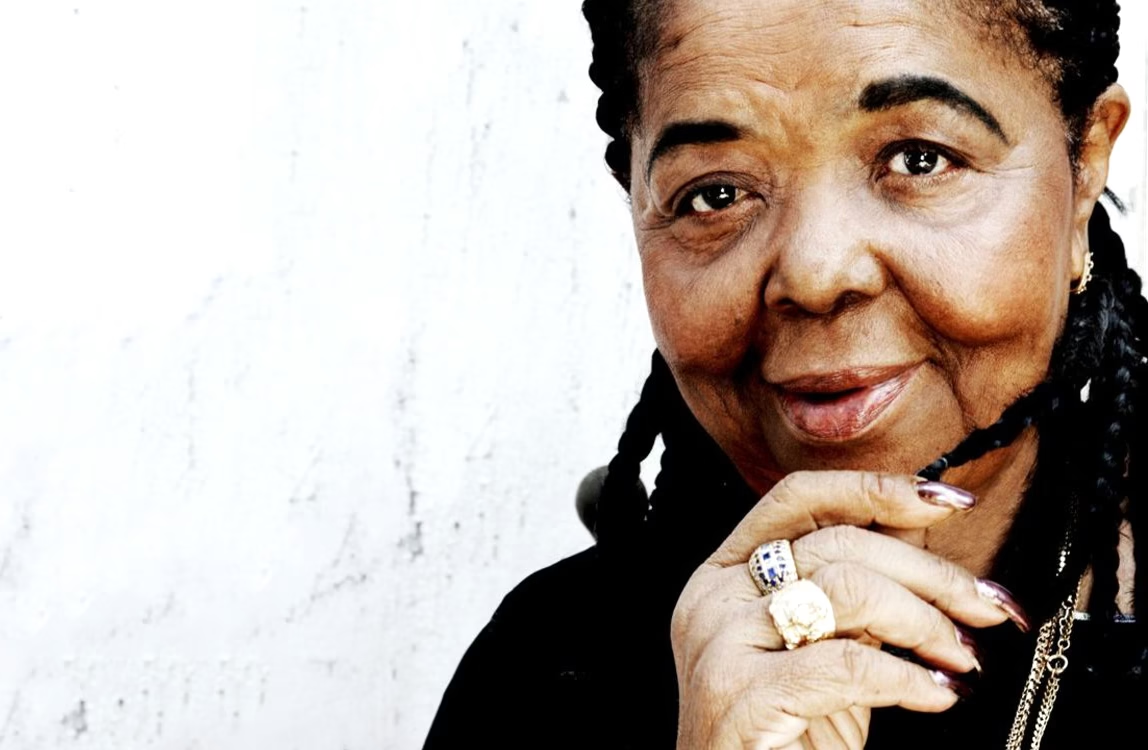
Cesária Évora: Cape Verde’s Barefoot Diva
Cesária Évora (1941–2011) rose from humble beginnings to global fame, enchanting audiences as the “Barefoot Diva” with her soulful mornas. With her rich, haunting voice and unassuming presence, Évora put her tiny homeland on the world music map by performing its traditional Creole ballads of love and longing with a unique mix of sweetness and melancholy. In her fifties — an age when most singers wind down — she became an unlikely international star, singing barefoot with a glass of rum and a lit cigarette on stage.
Yet despite Grammy Awards and worldwide adulation, Évora remained disarmingly down-to-earth, singing as naturally for presidents as she once did for fishermen in the bars of Mindelo. Her life story – from impoverished orphan to Grammy-winning world music icon — is not only a testament to personal resilience but also a celebration of Cape Verdean culture that she carried to every corner of the globe.
Early Life in Mindelo and Musical Beginnings
Cesária Évora was born on August 27, 1941, in Mindelo, the port city of São Vicente Island in what was then the Portuguese colony of Cape Verde. She grew up in dire poverty during the colonial era; her father, a violinist, died when Cesária was just seven, and her mother and grandmother raised her. By the age of ten, the family’s hardships meant that young Cesária was sent to an orphanage, although she had already shown a love for singing.
As a teenager, she began performing morna – the plaintive, blues-like song genre of Cape Verde – at the encouragement of a guitarist boyfriend when she was 16. Blessed with a velvet contralto voice, Évora started singing in local bars and taverns of Mindelo to earn a living, becoming a popular attraction in the boisterous port town’s nightlife scene.
The Barefoot Singer
By 1960, still only in her late teens, she was singing live on Radio Mindelo and entertaining sailors from Portuguese cruise ships docked in the harbour. Performing barefoot came naturally to Évora – as a child, she often had no shoes – but it soon became her trademark onstage. Audiences took note of the barefoot singer delivering melancholy melodies with closed eyes and a stoic expression. She sang in Cape Verdean Kriolu, typically accompanied by guitar, piano, or the cavaquinho (a ukulele-like lute).
Repertoire
The morna songs in her repertoire were described as “sorrowful, emotion-charged chronicles” of the islands’ history – slavery, isolation, emigration, and yearning for lost loved ones. She also occasionally sang coladeiras, which are uptempo Cape Verdean tunes, to lighten the mood. These musical traditions, sometimes referred to as the islands’ indigenous blues, carried the bittersweet concept of sodade – a Creole term for profound nostalgia and longing – which was so authentic in Évora’s music that it naturally resonated with listeners’ hearts.
Dark Years Of Cize
Despite local fame as “Cize” (her nickname) and a voice revered in Mindelo’s cafés, Évora struggled for decades in true obscurity. Cape Verde was economically impoverished and culturally isolated under Portuguese rule, and singing brought her little income or opportunity.
She became a single mother of three children (two of whom survived to adulthood) and found it nearly impossible to support her family on a singer’s meagre earnings. By the mid-1970s – a time when Cape Verde won independence (1975) but sank into economic turmoil – Évora fell into despair. She battled alcoholism and depression, and her health and finances deteriorated so severely that friends in Mindelo organised collections to keep her fed.
Frustrated and exhausted, Cesária Évora quit singing in the late 1970s, retreating from public life for nearly a decade during what she later called her “dark years”. She moved back in with her mother, and music – once her solace – went silent as she struggled to survive.
Comeback: From “Dark Years” to Discovery in Lisbon
It seemed Évora’s story might have ended there, another brilliant voice stilled by hard times. But in 1985, a Cape Verdean women’s organisation invited the 44-year-old singer to perform in Portugal for a compilation album of female artists. Reluctantly, Évora agreed – marking the first time she ever left her island homeland.
In Lisbon, she performed alongside other Cape Verdean musicians (including the renowned singer Bana), rekindling her passion for music. The audiences of the Lusophone diaspora were enthralled by Évora’s authentic morna ballads, and among her new admirers was José da Silva, a young French-born producer of Cape Verdean descent.
Support from José da Silva
Da Silva had first heard Évora’s voice in a Lisbon restaurant and was struck by its beauty. Seeking her out in Mindelo, he found the singer living in a crumbling house “with holes in the floor,” caring for her nearly blind mother and family on meagre bar earnings – “her voice saved them,” as he later remarked. Da Silva became determined to help Évora find a broader audience. In 1988, José da Silva brought Cesária Évora to Paris to record for his independent label Lusafrica.
First Albums of Cesária Évora
That year, she released her debut album La Diva aux Pieds Nus (“The Barefoot Diva”), named for her habit of shunning shoes onstage. This first album – along with a 1990 follow-up Distino di Belita – experimented with modern arrangements (even synthesisers) that producers thought might appeal to contemporary tastes. But the slicker pop production did not suit Évora’s earthy style and went largely unnoticed.
Third Try is a Charm
It wasn’t until 1991 that Évora found her proper artistic footing in the studio: on her third album, Mar Azul, da Silva stripped back the instrumentation to a small acoustic ensemble, allowing Cesária’s limpid voice to shine over gentle guitar and cavaquinho lines. And it was it. Mar Azul marked a turning point. It captivated critics in Lisbon and Paris, who began to show Évora as a rising world music star.
The following year, Évora recorded “Miss Perfumado” (1992), a magisterial collection of mornas that included her signature song, “Sodade.” Backed by a marketing push from BMG France (which had picked up distribution), Miss Perfumado became a breakthrough hit, selling over 300,000 copies in France alone. After a lifetime in the shadows, the 51-year-old Cesária Évora suddenly found herself an international star.
Cesária Évora: Global Stardom in the 1990s
By the mid-1990s, Cesária Évora was touring the globe and hailed as one of Africa’s most celebrated musical talents. The barefoot grandmother from Cape Verde cut an unlikely figure on the world stage – often performing seated, with a shawl over her shoulders, eyes closed as she delivered heartbreaking songs in a language few outside her country understood.
Yet the emotional authenticity of Évora’s music transcended language. Audiences from Europe to North America were entranced by the “exquisitely sad and soulful” quality of her voice. Critics drew flattering comparisons to jazz greats like Billie Holiday or the French chanteuse Edith Piaf for her ability to convey sorrow and strong, honest resilience in a song.
Shine of the Barefoot Diva
She famously took a mid-show “cigarette break” – wandering off to the side of the stage to puff on a cigarette and sip grog or cognac while the band played instrumental mornas – then returning to sing with renewed fervour. The press dubbed her the “Barefoot Diva,” a title she reluctantly accepted. Évora herself insisted there was nothing mystical about her shoeless habit: it was simply more comfortable and harkened back to her impoverished upbringing. Once, after she removed her shoes because her feet hurt, adoring fans grabbed them and filled them with cash tips – thus inadvertently reinforcing the legend of the “barefoot diva”.
The Power of Cesária Évora and her Quiet Charisma
In reality, Évora’s demeanour was the opposite of a prima donna. She had a quiet, stoic charisma and a dry wit. When journalists asked about her “drinking and smoking grandmother” image, she quipped that “lots of grandmothers drink and smoke”, and noted she had even given up her beloved whiskey. If asked whether performing in prestigious concert halls impressed her, she would shrug that if Cape Verde had the same resources, it too would have such venues. Évora’s humility and candour only endeared her more to fans worldwide.
Growing Fame
After Miss Perfumado conquered Europe, Évora’s fame spread across continents. She gave a legendary sold-out performance at Théâtre de la Ville in Paris in 1992, then toured Brazil, Africa, and Canada. The United States embraced her slightly later – but enthusiastically.
In 1995, she released her first U.S. album, Cesaria, on Nonesuch Records, earning her first Grammy nomination and expanding her following in North America. By the late 1990s, Évora had become a popular guest at major venues and festivals, singing, among others, at the Hollywood Bowl in Los Angeles, and even appearing on late-night TV with David Letterman. Her records consistently topped world music charts. By 2001, she had sold over 4 million albums, which is an astounding achievement for a Cape Verdean artist.
Cesária Évora: Loyal to Herself
Despite all the success – the awards, touring, and collaborations – Évora remained a creature of habit and a true daughter of Cape Verde. She would typically shuffle on stage wearing simple black dresses (her favourite colour was “black, black and black,” she joked) and would perform with the same unaffected style whether in a rustic island tavern or a 2,000-seat concert hall.
“I perform the same way whether it’s in front of a president, a group of fishermen in a bar, or in a big concert hall,” she said in an interview. “I don’t feel happy or sad when I sing my music, I feel myself.” It was this authenticity – the sense that every song she sang was an honest piece of her soul – that made audiences around the world fall in love with her.
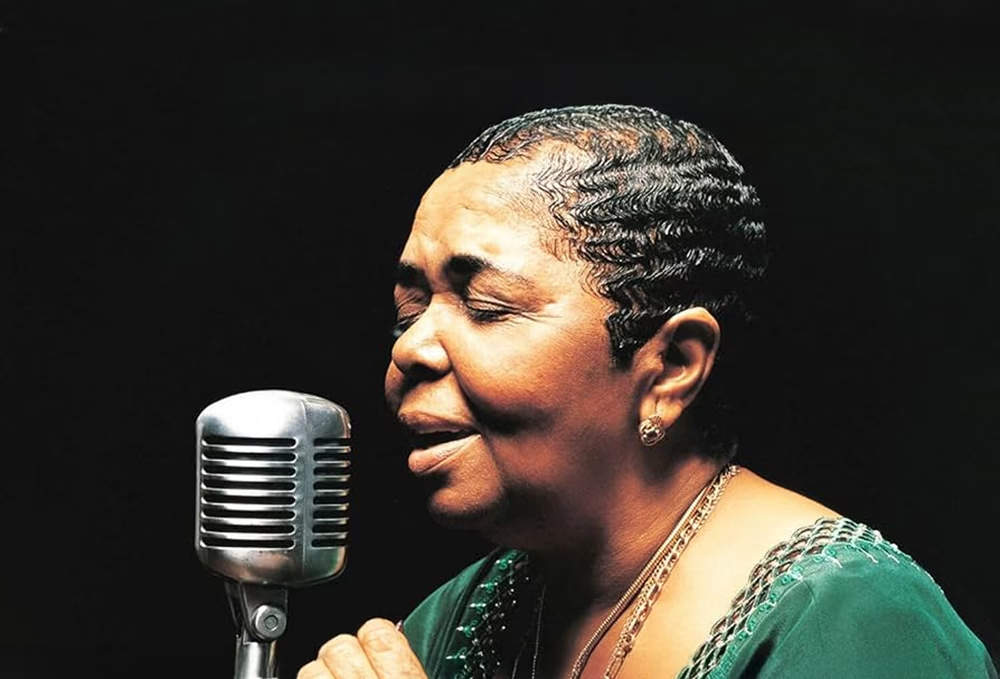
Cesária Évora’s Music, Style and Cape Verdean Identity
At the heart of Cesária Évora’s global appeal was the profound sense of identity in her music. She almost exclusively sang traditional Cape Verdean genres, above all morna, which she described simply as songs about “love relationships”.
In truth, morna encapsulates the bittersweet saga of Cape Verde – lyrics speak of love and longing, of sodade for faraway family, of the sea that separates emigrants from home, and of the ache of poverty and isolation. By carrying morna to international audiences, Évora gave voice to the experiences of the Cape Verdean people, both those on the islands and the vast diaspora scattered across Europe and the Americas.
She also sang a livelier Afro-Latin genre called coladeira on occasion. Still, it was the slow, minor-key mornas – often accompanied by wistful violins and gentle guitar arpeggios – that became her trademark, earning her the title “Rainha da Morna,” or Queen of Morna. Évora’s vocal style was frequently likened to a form of Cape Verdean blues or fado, though morna has its own distinct Creole poetry and swing. Critics noted the “silky, weary, yet supple” quality of her voice – emotive but never overdone, conveying deep sorrow with beautiful dignity.
The Performance
On stage, she performed in an almost regal calm, rarely moving more than to gesture softly with a hand or to tilt her head as she hit a particular note. This restraint made the moments when her voice quavered with emotion all the more powerful. In recordings, her producers kept the arrangements neatly organised. The focus was always on Évora’s warm and melancholic voice.
For Cape Verdeans, Cesária Évora became an icon of national pride. “Before Cesária, no one knew about Cape Verde… it was like it didn’t exist,” said singer Mayra Andrade, one of the new generation of artists inspired by Évora’s path.
Fame and Influence of Cesária Évora
Indeed, Évora’s international success put Cape Verde on countless maps and proved that a small island nation of half a million people could produce world-class art. She brought morna to the world, and in doing so cast a long shadow: for years, younger Cape Verdean singers were measured against her legacy. Many, such as Andrade, Lura, and Sara Tavares, have acknowledged Évora’s influence while forging their own distinctive styles.
Évora also influenced artists beyond her culture – even global pop stars. (American singer Madonna was a fan of the Barefoot Diva and once even invited her to perform at her wedding. Cesária politely declined!) Évora’s songs, especially “Sodade,” have been covered and remixed by numerous musicians, spreading Cape Verdean morna into many other genres such as jazz, electronica, and pop.
Cape Verdean Icon
At home, Évora was not just a pop figure but a cultural ambassador. In 2004, she was designated an ambassador for the UN’s World Food Programme, using her fame to advocate against hunger. The Cape Verdean government awarded her the status of national cultural ambassador, complete with a diplomatic passport. Portugal and France honoured her with top civilian awards. She was even made a Knight of the Legion of Honour in France in 2009. This reflects how Évora’s music transcended simple entertainment to become a living symbol.
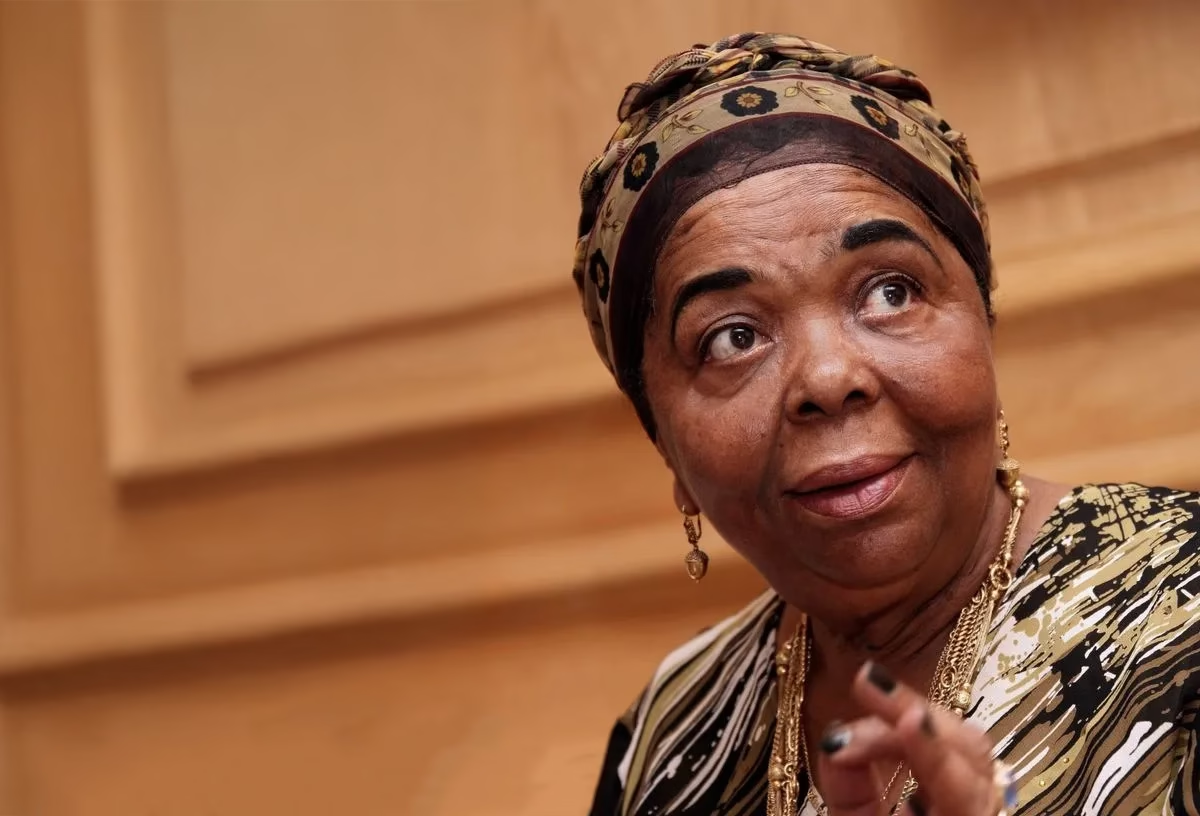
Cesária Évora’s Later Years
Well into her sixties, Cesária Évora kept up a tireless pace of recording and touring. From 1995 onward, she released a new album roughly every two to three years – each steeped in Cape Verdean musical tradition and maintaining a remarkably high quality. Notable releases during this period included: Café Atlantico (1999), São Vicente di Longe (2001), Voz d’Amor (2003), and Rogamar (2006), among others.
International Awards
Her 2003 album Voz d’Amor earned Évora the Grammy Award for Best Contemporary World Music Album, a crowning industry recognition that came after several prior nominations. She also won the prestigious Victoire de la Musique in France and a KORA All-African Music Award, adding to a list of honours that highlighted her status as one of Africa’s great voices. In total, Évora received six Grammy nominations over her career and numerous international prizes.
Health Struggles
By the mid-2000s, after years of hard touring and a lifetime of smoking, Évora’s health began to falter. In 2005, she suffered her first major heart-related episode. She recovered and continued to perform, but in 2008, she had a stroke just before a concert in Melbourne, Australia, forcing the cancellation of the remainder of that tour.
Ever the trooper, Évora was back on stage after recuperation, but in 2010, following a concert in Paris, she had a heart attack that required urgent open-heart surgery. Her health was declining, and doctors warned her that further travel could be fatal. As a result, the singer finally, albeit reluctantly, decided to retire in September 2011, at the age of 70. “I have no strength, no energy, now I must rest,” she told a French newspaper, apologising to fans. It was a rare moment of public vulnerability from Évora, who had always borne her burdens stoically.
The Sorrowful Farewell of Cesária Évora
Just three months after retiring, on December 17, 2011, Cesária Évora died in Mindelo. In the city that had been her home and muse. The cause of death was reported as the result of years of cardiac problems. One local paper noted that even 36 hours before her death, Évora was sitting on her porch smoking and welcoming visitors – a final testament to her indomitable spirit.
The World in Grief
Cape Verde went into mourning at the news of the loss of their national icon. The government declared two days of national mourning, and flags flew at half-mast. Thousands of Cape Verdeans poured into the streets of Mindelo to escort her coffin and pay their respects as she was laid to rest on her native São Vicente.
Tributes also poured in from around the world – fellow musicians, from Brazil to France, praised the “barefoot diva” who had taught the world to feel sodade through her songs. The French president called her “the voice of Cape Verde”. Others hailed her as one of the greatest vocalists of her era.
Évora grew so big that even after her death, she continues to live on recordings that remain popular and widely listened to.
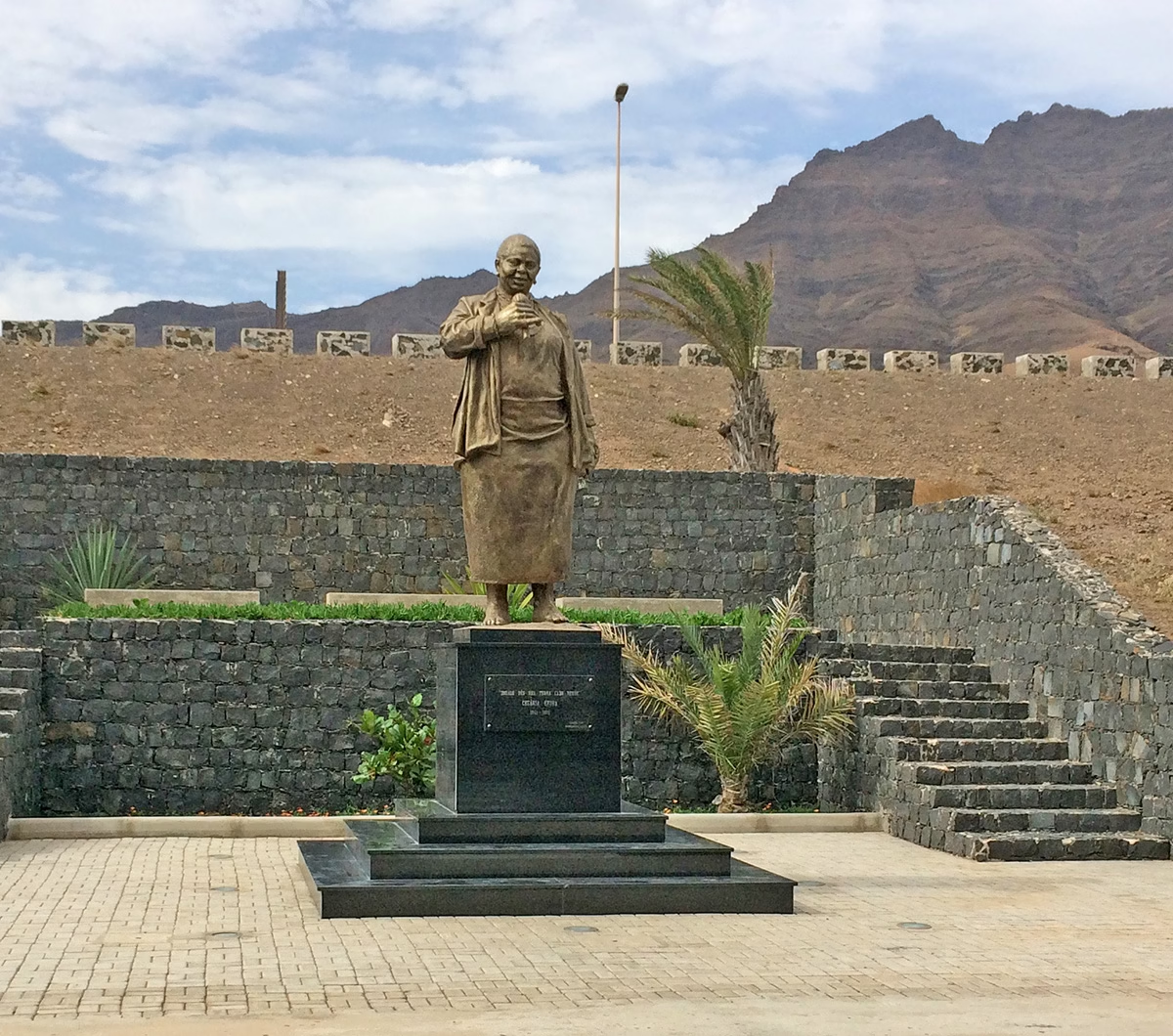
Cesária Évora’s Legacy and Cultural Impact
In Cape Verde, Cesária Évora’s legacy is everywhere – in music, memory, and even the landmarks of her beloved São Vicente. In 2012, a year after her passing, the country renamed São Vicente’s international airport Aeroporto Internacional Cesária Évora in her honour.
Núcleo Museológico Cesária Évora
Arriving in Mindelo today, travellers are greeted by Évora’s name – a reminder that she remains the island’s most celebrated export. In 2015, a museum called the Núcleo Museológico Cesária Évora opened in Mindelo (in the singer’s own former house) to preserve her personal artefacts, gold records, stage dresses, and photographs for fans and future generations. The museum offers an intimate look at her life’s journey, allowing visitors to trace the steps of a girl from Rua de Moeda who became a world star.
In Memory of Cesária Évora
Artistic memorials to Cesária Évora have appeared in Cape Verde, including a number of murals that showcase the enduring love for the artist. There is also one striking bronze statue of the singer, seated with her feet bare (unveiled at the airport), reflecting the affection she still commands from the public.
Cape Verde’s International Recognition
Perhaps Évora’s most significant legacy is her contribution to bringing Cape Verdean culture to the world stage. Thanks in no small part to her global advocacy, Cape Verde’s morna music was inscribed by UNESCO in 2019 on the Representative List of the Intangible Cultural Heritage of Humanity. This UNESCO recognition of morna – the genre Évora embodied – acknowledges its profound importance as a “fundamental aspect of Cape Verdean social and cultural life” and cements its value for future generations. In effect, Évora helped turn what was once local tavern music into a treasured art form of all humanity.
The Inspiration
Beyond official honours, generations of musicians cite Évora as an inspiration. A new wave of Cape Verdean and Lusophone African singers – from Mayra Andrade to Lura and Sara Tavares – have followed in her footsteps, blending modern influences with traditional styles, and openly credit Évora for paving the way. Évora has brought the morna – the islands’ indigenous blues – to the world. In a way, it’s thanks to her breakthrough that younger Cape Verdean artists could gain international recognition for their own voices – she cleared the path for them.
Even a decade after her death, Évora’s recordings remain as popular as ever. Her music is discovered by new listeners who marvel at its emotional depth and complexity. A documentary film titled “Cesária Évora” premiered a few years ago, in 2022. It features rare footage of the artist both on and off the stage. The movie helped solidify the memory of this amazing Cape Verdean singer.
Cesária Évora: One of a Kind
To this day, Cesária Évora’s story remains one of the most remarkable narratives in world music. She was a woman who endured poverty, obscurity, and personal demons, yet never lost the pure power of her character and voice or the connection to her culture. When she finally sang for the world, the world stopped to listen. Évora shared an actual piece of her soul through her songs of authentic sodade. In doing so, she became an ambassador not just for a genre or a nation, but also for the universal human longing that an artist can express.
Cesária’s Legacy
Today, the Barefoot Diva’s throne may be empty. Still, her legacy lives on in every morna that drifts across the cobbled streets of Santa Maria at night, in every singer’s voice from Lisbon to New Orleans who covers “Sodade,” and in the hearts of millions who, thanks to Cesária, know the sound of Cape Verde. Her voice endures, timeless and full of feeling, ensuring that the world will not soon forget the morna of Cesária Évora, the unforgettable diva who sang barefoot and touched our souls.
Bibliography
- Cesária Évora obituary – Singer behind the popularity of Cape Verde’s morna ballads, G. Cartwright, The Guardian;
- Paint it black. Peter Culshaw meets Cesaria Evora, the singer who thrives on misery, P. Culshaw, The Guardian;
- Mayra Andrade: The new diva of Cape Verde, The Independent UK;
- Cesária Évora, Wikipedia, the free encyclopedia;
- Cesaria Evora in Encyclopedia Britannica;
- Cesaria Evora, Cape Verdean Singer Known As “Barefoot Diva,” Dies at 70, Nonesuch;
- Morna, musical practice of Cabo Verde, UNESCO Intangible Heritage;
- File: Statue Aeroporto Cesaria Evora, Sao Vicente.JPG, Herbert Wie, Wikimedia Commons;




